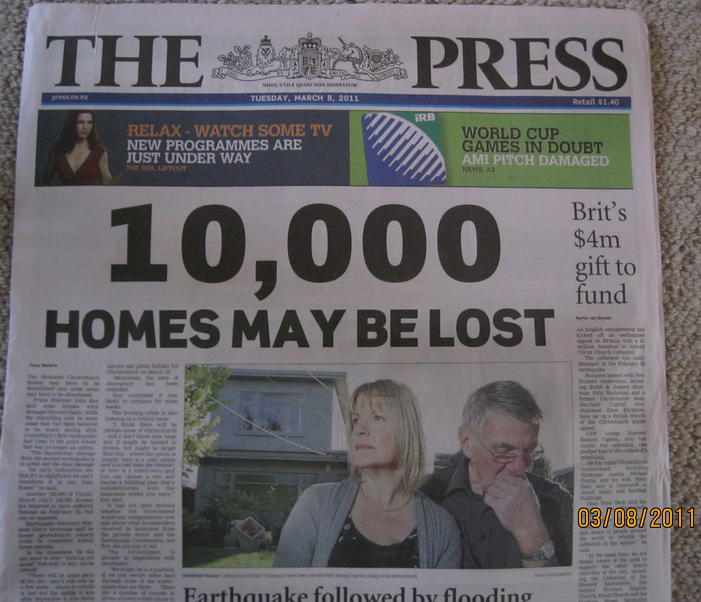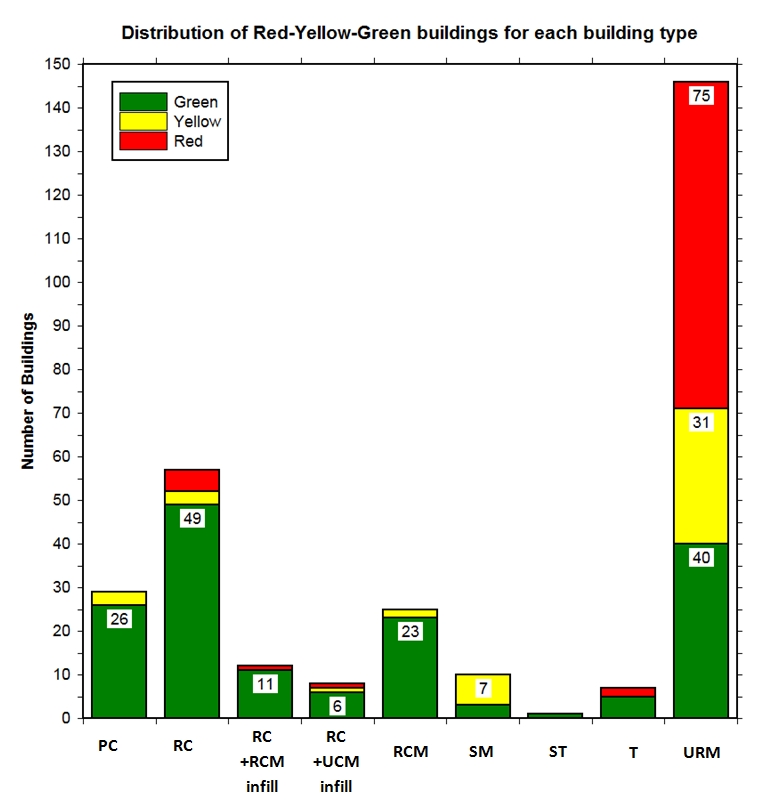By the EERI Reconnaissance Team.
March 19, 2011. Earthquake Engineering Research Institute.
The stream of aftershocks since 4 September 2010 has rattled people’s nerves. The major aftershock of 22 February 2011, which heavily damaged heritage and unreinforced masonry structures, was the last straw for many residents. By all accounts, tens of thousands of people have left Christchurch, and their return depends on events that are yet to unfold. The overwhelming level of uncertainty regarding future aftershocks, the rebuilding process, and seismic safety in Christchurch is arguably one of the most difficult issues for residents. The importance of uncertainty in aftershock predictions is accurately reflected in statements from geo-scientists and re-ebuilding plans will be slow to emerge. In this environment people put stock in aftershock predictions and demolotion plans that are issued with conviction or authority. Notable examples of this are aftershock predictions based on lunar proximity and home demolition plans based on incomplete information.
Cantabrians have been following the meteorological and seismological predictions of Auckland-based Ken Ring, also known as “the moon-man.” Mr. Ring associates extreme meteorological and geophysical events with king tides and lunar proximity. On this basis Mr. Ring has issued predictions of major aftershocks in Christchurch. Earth-moon distance varies by about 14% on a lunar-cycle and an additional 5% on a longer-period cycle. Minimal perigee’s occurred in September 2010 and mid-March 2011. The 4 September 2010 and 22 February 2011 earthquakes in Canterbury and the 11 March 2011 earthquake in Japan have likely reinforced his credibility with some who have been living through the aftershocks in Christchurch. In an effort to inject accurate data into debates regarding Mr. Ring’s predictions, Paul Nicholls of the University of Canterbury IT office has developed a live-animation and of the aftershock sequence and plot of seismic energy along with moon phase and moon proximity.
Relating to demolition and rebuilding plans, in the second week following the 22 February 2011 aftershock, Prime Minister John Key announced that 10,000 homes would be demolished on the basis of preliminary satellite imagery. House demolotion decisions require detailed site assessments and structural evaluations. Civil Defense, under whose authority building inspections are carried out, estimates 2000-3000 homes would be demolished.
 |
| Figure 1. The Press. Tuesday March 8, 2011. |
In the days immediately following 22 February 2011, a walk-through assessment was made along streets with disproportionately large representation of unreinforced masonry. Tabulation of red, yellow, and green-stickered buildings according to building type led to a prediction that 1 out of 3 buildings in the Central Business District had either collapsed or would be pulled down (Figure 2).
 |
| Figure 2. Distribution of Red-Yellow-Green buildings for each building type. |
The sample did not include many modern buildings, many of which performed well and which contain many more square meters than the URM building stock. At the time of this writing, fifteen or twenty buildings over six stories are considered demolition candidates.
The rebuilding process for the Central Business District will require many months. Clearly, the long term economic impacts to Canterbury will be significant, and much depends on peoples’ decisions of where to live and work. The re-built Christchurch will be more seismically resilient and poorly-founded predictions intended to fill an information void associated with uncertain geophysical and political processes can serve only to unnecessarily scare Cantabrians.
Learning from Earthquakes: First person reports